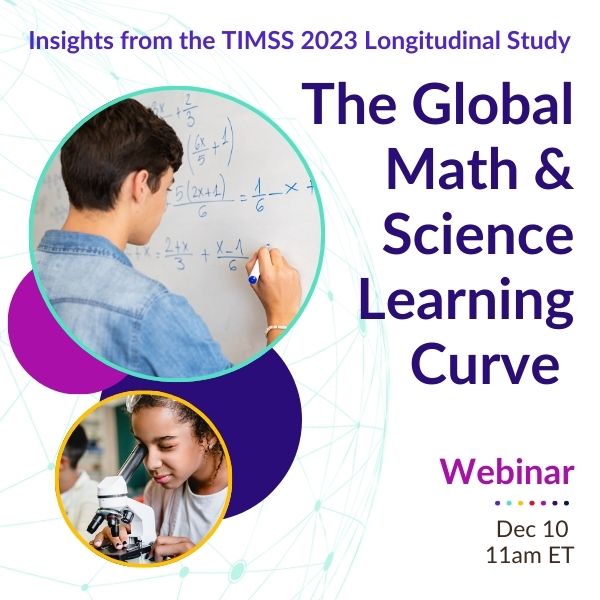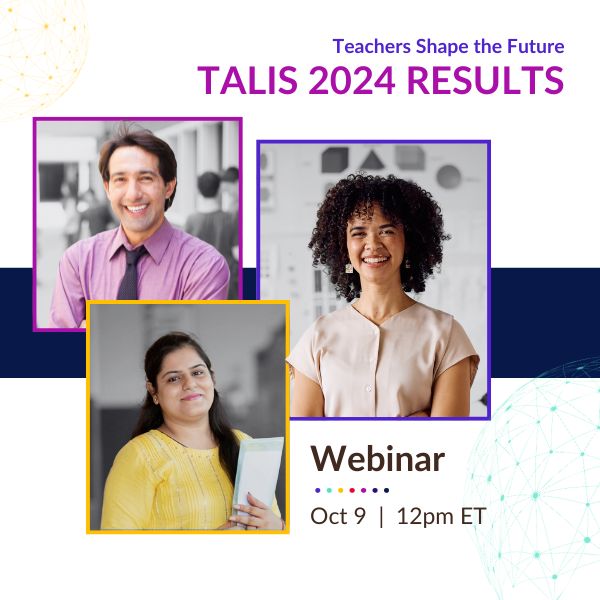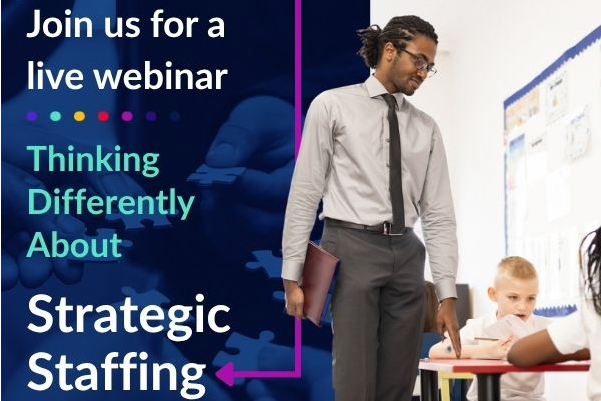What if high school wasn’t bound by time as we know it? In the second webinar of NCEE’s Thinking Differently series, we explored how schools and systems are reimagining time—not just in the daily schedule, but across the entire high school experience. The conversation centered on how we can create more flexible, responsive pathways that honor student choice, allow for varied pacing, and provide the right supports at the right time.
We began with key insights from lead researcher Jackie Kraemer, drawing on findings from Thinking Differently About Time, Part 2: High School. NCEE CEO Vicki Phillips then moderated a panel with
- Dr. Hafedh Azaiez, Superintendent of Round Rock ISD (TX);
- Georg Berger, Director of Olten Vocational School (Switzerland); and
- Jennifer Tran, student advocate and co-founder of the National Student Board Member Association.
Together, they brought powerful insights from the field—highlighting the importance of relevance, flexibility, and trust in designing high school experiences that prepare students to thrive.
See slides from the presentation here.
Read the brief, Thinking Differently About Time, Part 2: High School
Watch a recap of the first webinar in this series, Thinking Differently: Transforming Time in Grades 1–9, here.
High school is meant to launch students toward their futures—but for many, it’s become a rigid journey with limited choices and too few onramps. This webinar challenged participants to imagine something different: a high school experience shaped by flexibility, personalization, and relevance.
One size doesn’t fit all.
Lead researcher Jackie Kraemer opened the session with findings from NCEE’s latest brief, which examines how top-performing systems around the world approach time in high school. Rather than treat four years of general education as a default path, many systems offer students a broader array of choices—differentiated by length, content, and credentials. Jackie underscored that in these systems, time is intentionally designed to help students explore, choose, and adapt:
“We’re seeing that students are learning what they need to learn just in time, not just in case. In the U.S. we often want to prepare everyone for every path post-high school. These systems, on the other hand, let students choose what they want to learn, make sure they’re successful, but then support them if and when they change direction.”
Let students drive.
A key thread running throughout the panel was the importance of student choice. Panelist Jennifer Tran emphasized the need for systems that respect and support student agency, not just rhetorically but structurally—by giving them meaningful roles in shaping their learning.
“The ultimate flexibility comes from making it truly transparent—so students know what options are out there, and can pursue them with support from their schools or on their own.”
Building a Bigger Village
Dr. Hafedh Azaiez emphasized the importance of expanding the definition of who is involved in shaping student pathways. From his perspective, schools cannot—and should not—do this work alone. Drawing on his experience as Superintendent of Round Rock ISD, he spoke about the critical role of partners beyond the school system in supporting student success.
“[We must] make sure that our village is getting bigger. And I mean by that, how can we leverage our business partners? How can we leverage our higher ed partners? How can we leverage our relationship with our parents and our community as a whole? As long as we can continue doing those kind of things, I think the future is very bright for our students.”
By engaging a broader ecosystem, schools can provide students with more meaningful opportunities—and a stronger network of support—as they chart their own course.
Learning happens in many places—and at many paces.
International panelist Georg Berger brought a systems-level view from Switzerland, where vocational pathways are the most common choice for high school students. He emphasized that the system is set up so that vocational education isn’t the end of learning—it’s the beginning of a flexible, evolving journey. Students who complete a vocational diploma in Switzerland still have a wide range of options ahead of them, with many going on to get advanced degrees.
“Vocational education is an entry into the adult world. It’s not the end of school. You have the possibility to go into the University of Applied Sciences to get your bachelor, or master, or even a PhD.”
This approach underscores the importance of designing systems that don’t limit students to one path, but instead support them in continuing their learning as their goals evolve. As Vicki emphasized,
“One thing I really want people to take away from this conversation today is the fact that students not only get to choose, but they can change their mind.”
A Look Ahead: Optimism for the Future
As the conversation came to a close, each panelist reflected on the opportunities ahead. Whether it was expanding access to career-connected learning, empowering students to take the lead in designing their own pathways, or strengthening partnerships across systems, there was a shared sense that change is not only possible—it’s already underway.
The panelists emphasized that rethinking time in high school isn’t just a structural shift—it’s a mindset shift. And it’s one that requires trust in young people, collaboration across sectors, and a willingness to build systems around what learners truly need.
“My hope [is] that educational administrators like my fellow panelists and those watching on the webinar really allow students to contribute to and co-create an education for their future.”
—Jennifer Tran




